Related Research Articles
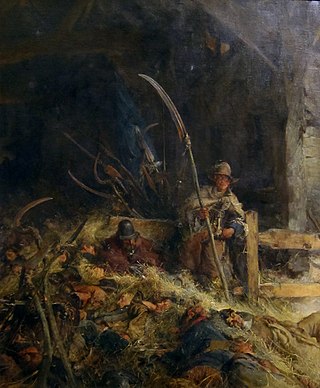
The Battle of Sedgemoor was the last and decisive engagement between the Kingdom of England and rebels led by the Duke of Monmouth during the Monmouth rebellion, fought on 6 July 1685, and took place at Westonzoyland near Bridgwater in Somerset, England, resulting in a victory for the English army.

The Royal Regiment of Horse Guards (The Blues) (RHG) was a cavalry regiment of the British Army, part of the Household Cavalry.

Field Marshal Sir Robert Rich, 4th Baronet was a British cavalry officer. As a junior officer he fought at the Battle of Schellenberg and at the Battle of Blenheim during the War of the Spanish Succession. He was then asked to raise a regiment to combat the threat from the Jacobite rising of 1715. He also served with the Pragmatic Army under the Earl of Stair at the Battle of Dettingen during the War of the Austrian Succession. As a Member of Parliament he represented three different constituencies but never attained political office.
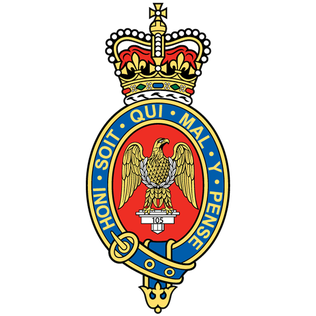
The Blues and Royals (RHG/D) is a cavalry regiment of the British Army, part of the Household Cavalry. The Colonel of the Regiment is Anne, Princess Royal. It is the second-most senior regiment in the British Army.
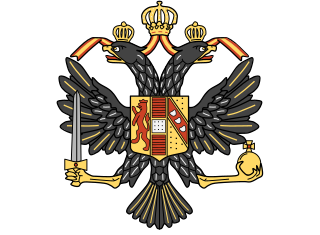
1st The Queen's Dragoon Guards (QDG) is a regiment in the Royal Armoured Corps of the British Army. Nicknamed The Welsh Cavalry, the regiment recruits from Wales and the bordering English counties of Cheshire, Herefordshire, and Shropshire, and is the senior cavalry regiment, and therefore senior regiment of the line of the British Army.

Richard Lumley, 1st Earl of Scarbrough was an English Army officer, Whig politician and peer best known for his role in the Glorious Revolution.
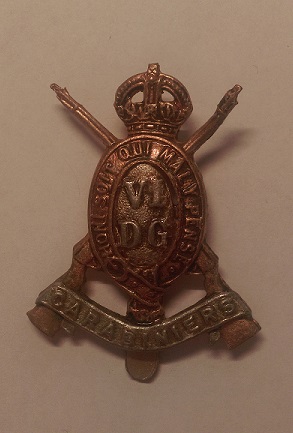
The Carabiniers (6th Dragoon Guards) was a cavalry regiment of the British Army. It was formed in 1685 as the Lord Lumley's Regiment of Horse. It was renamed as His Majesty's 1st Regiment of Carabiniers in 1740, the 3rd Regiment of Horse (Carabiniers) in 1756 and the 6th Regiment of Dragoon Guards in 1788. After two centuries of service, including the First World War, the regiment was amalgamated with the 3rd Dragoon Guards (Prince of Wales's) to form the 3rd/6th Dragoon Guards in 1922.

The 1st King's Dragoon Guards was a cavalry regiment in the British Army. The regiment was raised by Sir John Lanier in 1685 as the 2nd Queen's Regiment of Horse, named in honour of Queen Mary, consort of King James II. It was renamed the 2nd King's Own Regiment of Horse in 1714 in honour of George I. The regiment attained the title 1st King's Dragoon Guards in 1751. The regiment served as horse cavalry until 1937 when it was mechanised with light tanks. The regiment became part of the Royal Armoured Corps in 1939. After service in the First World War and the Second World War, the regiment amalgamated with the 2nd Dragoon Guards in 1959 to form the 1st The Queen's Dragoon Guards.

The 4th Royal Irish Dragoon Guards was a cavalry regiment in the British Army, first raised in 1685 as the Earl of Arran's Regiment of Cuirassiers. It was renamed as the 4th Dragoon Guards in 1788 and service for two centuries, including the First World War, before being amalgamated with 7th Dragoon Guards, to form the 4th/7th Dragoon Guards in 1922.
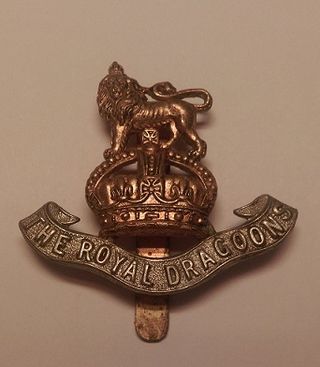
The Royal Dragoons was a heavy cavalry regiment of the British Army. The regiment was formed in 1661 as the Tangier Horse. It served for three centuries and was in action during the First and the Second World Wars. It was amalgamated with the Royal Horse Guards to form The Blues and Royals in 1969.
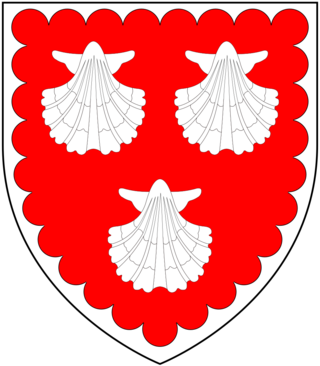
General Thomas Erle PC of Charborough, Dorset, was a general in the English Army and, thereafter, the British Army. He was also a Whig politician who sat in the House of Commons of England and of Great Britain from 1678 to 1718. He was Governor of Portsmouth and a Lieutenant-General of the Ordnance.

The 2nd Dragoon Guards (Queen's Bays) was a cavalry regiment of the British Army. It was first raised in 1685 by the Earl of Peterborough as the Earl of Peterborough's Regiment of Horse by merging four existing troops of horse.

The 5th Dragoon Guards was a British army cavalry regiment, officially raised in January 1686 as Shrewsbury's Regiment of Horse or the Earl of Shrewsbury's Horse.

The 7th Dragoon Guards was a cavalry regiment in the British Army, first raised in 1688 as Lord Cavendish's Regiment of Horse. It was renamed as the 7th Dragoon Guards for Princess Charlotte in 1788. It saw service for two centuries, including the First World War, before being amalgamated with the 4th Royal Irish Dragoon Guards, to form the 4th/7th Dragoon Guards in 1922.
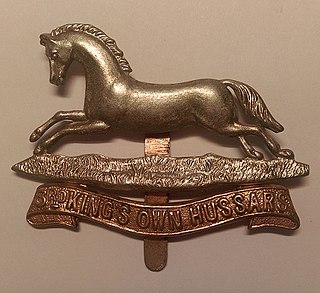
The 3rd Hussars was a cavalry regiment of the British Army, first raised in 1685. It saw service for three centuries, including the First and the Second World Wars, before being amalgamated with the 7th Queen's Own Hussars, to form the Queen's Own Hussars in November 1958.

The 4th Queen's Own Hussars was a cavalry regiment in the British Army, first raised in 1685. It saw service for three centuries, including the First World War and the Second World War. It amalgamated with the 8th King's Royal Irish Hussars, to form the Queen's Royal Irish Hussars in 1958.

Sir John Talbot was an English politician, soldier, and landowner, who was Member of Parliament for various seats between 1660 and 1685. He held rank in a number of regiments, although he does not appear to have seen active service.
Lieutenant-General Thomas Windsor, 1st Viscount Windsor, styled The Honourable Thomas Windsor until 1699, was a British Army officer, landowner and Tory politician who sat in the English and British House of Commons between 1685 and 1712. He was then elevated to the British House of Lords as one of Harley's Dozen.
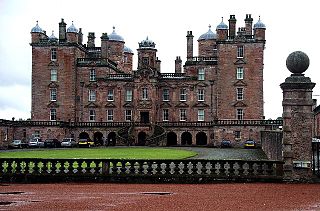
Lieutenant-General James Douglas (1645–1691), younger brother of the Duke of Queensberry, was a Scottish military officer, who served as MP for Peeblesshire in the 1685 to 1686 Parliament of Scotland.
John Berkeley, 4th Viscount Fitzhardinge of Bruton, Somerset was an English courtier, treasury official, army officer and politician who sat in the English and British House of Commons from 1690 to 1710.
References
- 1 2 3 4 5 Wauchope, Piers (23 September 2004). "Lanier, Sir John (d. 1692), army officer" . Oxford Dictionary of National Biography (online ed.). Oxford University Press. doi:10.1093/ref:odnb/16050. ISBN 978-0-19-861412-8.(Subscription or UK public library membership required.)
- ↑ "1685 to 1899 – A Short History of 1st The Queen's Dragoon Guards". Regimental Museum of the 1st The Queen’s Dragoon Guards (The Welsh Horse). Archived from the original on 7 July 2008. Retrieved 26 July 2016.
- ↑ "1st King's Dragoon Guards". Regiments.org. Archived from the original on 10 January 2006. Retrieved 26 July 2016.
{{cite web}}: CS1 maint: bot: original URL status unknown (link)